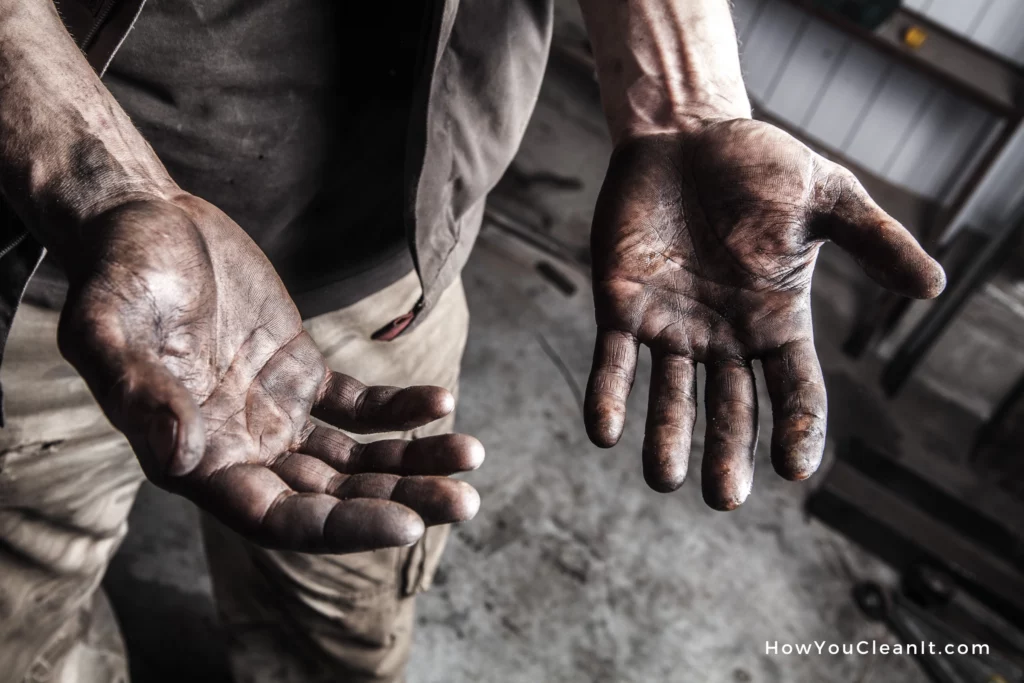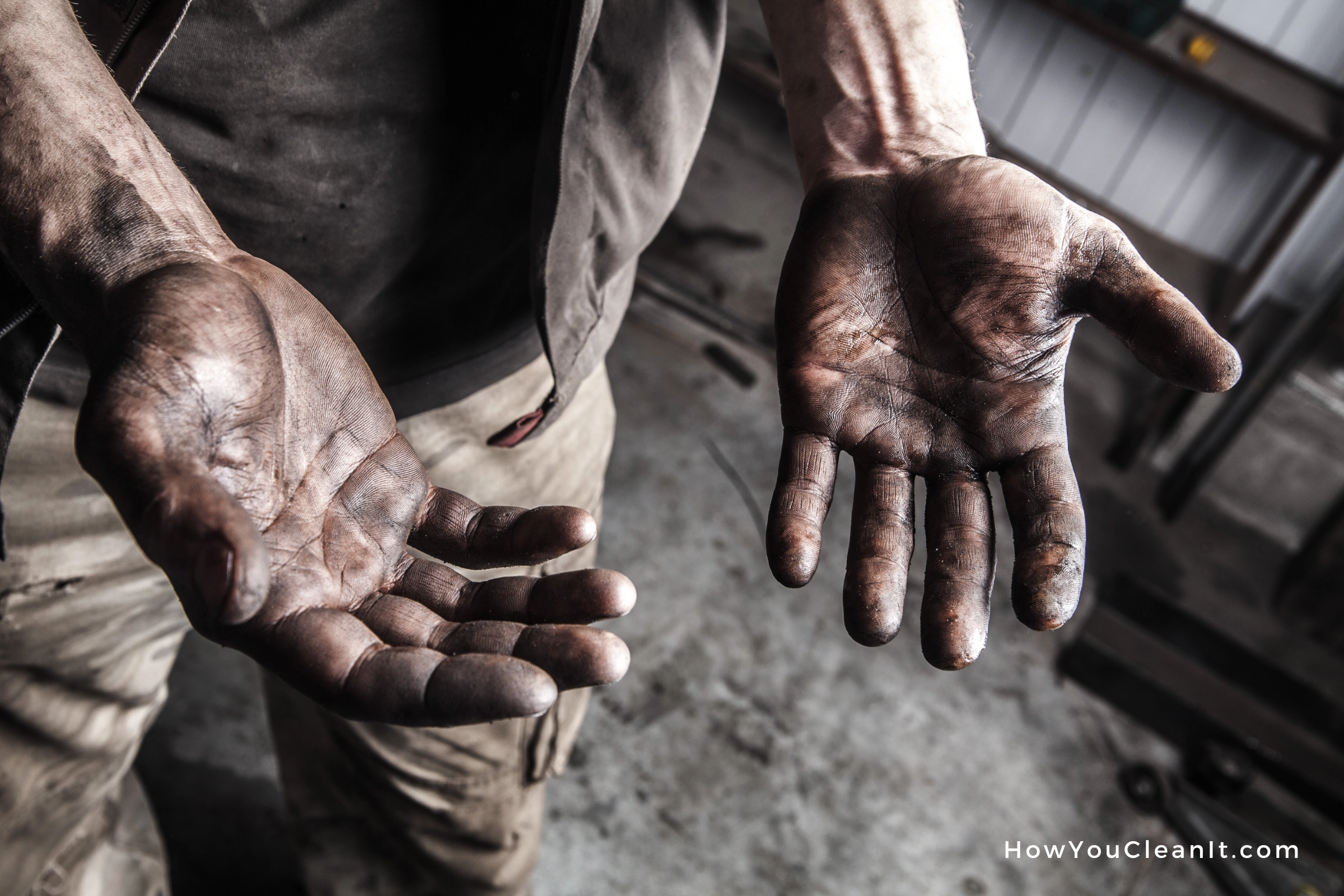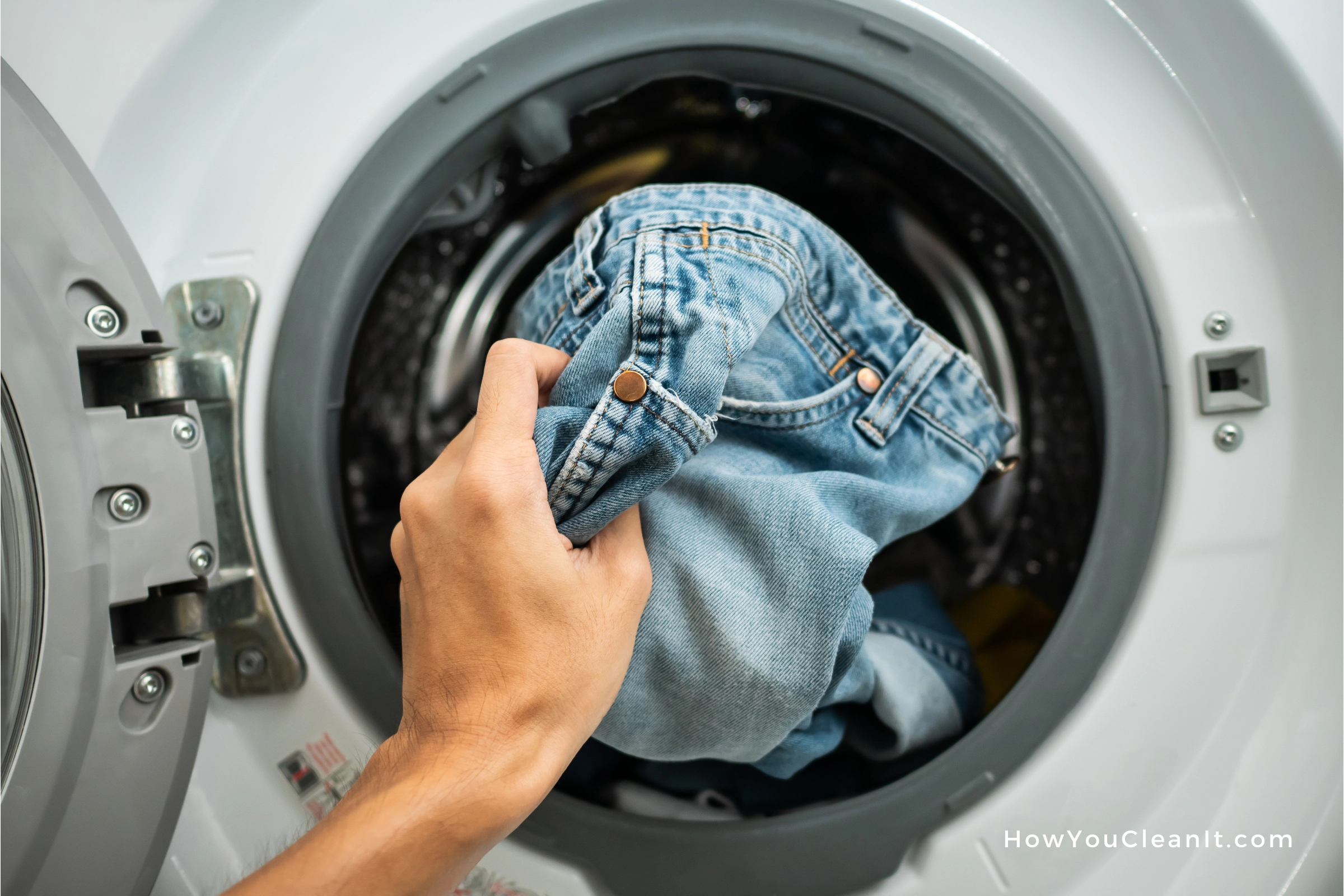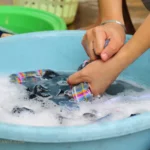
How to Get Hydraulic Fluid Out of Clothes and Eliminate Its Odor
This post may contain affiliate links or Google Ads and we may earn a small commission when you click on the links at no additional cost to you. As an Amazon Affiliate, we earn from qualifying purchases. This is at no additional cost to you and helps with our website expenses.
How to get hydraulic fluid out of clothes, you ask?
Picture this: It’s a sunny afternoon, and our brave protagonist – let’s call him Joe – is tinkering in his workshop.
Hydraulic tools at the ready, he’s in his element. Until suddenly, whoops! The hydraulic fluid canister takes a tumble and – oh, the humanity – his favorite shirt falls victim to a splattering of the stubborn liquid.
Poor Joe, he never saw it coming. But don’t despair! If you find yourself in a similar, sticky (and rather slick) situation, this blog post is your savior.
Understanding Hydraulic Fluid and How to Get Hydraulic Fluid out of Clothes
Let’s put a pause on our hero’s predicament for a moment to better understand his foe: hydraulic fluid.

This slippery substance is often the unsung hero in a multitude of machines. It’s the driving force behind the scenes, responsible for lubrication, power transmission, and even heat transfer.
Hydraulic fluid is used in a broad range of applications, including:
- Automotive systems: It’s the secret sauce making your power steering and brakes work smoothly.
- Aviation equipment: Ever wonder how those heavy airplane landing gears retract? Thank hydraulic fluid.
- Construction machinery: It powers the muscle of heavy-duty equipment like excavators and loaders.
- Industrial processes: From manufacturing equipment to conveyor belts, hydraulic fluid is ubiquitous.
- Agricultural machines: Even tractors and combine harvesters rely on it.
Despite its usefulness, hydraulic fluid has one sticky trait – it loves to latch onto clothing, creating a bond that seems, at first glance, unbreakable.
So, how does one find themselves sporting a hydraulic fluid ensemble? Well, it’s simpler than you might think. Maybe you’re working in your garage, and a misstep sends the fluid flying onto your clothes.
Or perhaps you’re in a profession where interacting with hydraulic fluid is part of the daily grind. Even a routine check of your car’s brake fluid could lead to an unsolicited fluid fashion statement.
Regardless of how it happens, you’re left with the same result: hydraulic fluid making an unwelcome appearance on your outfit. And then you’re asking yourself how to get hydraulic fluid out of clothes.
Does Hydraulic Fluid Stain Clothes?
Now, let’s address the question hovering like a dark cloud over our tale: does hydraulic fluid stain clothes?
To put it plainly, yes, hydraulic fluid can indeed stain clothes.
With its slick, oily composition, hydraulic fluid not only creates a visible mark on your fabrics but also leaves a greasy residue that can be a nightmare for your favorite pair of jeans or your beloved workshop shirt.
Removing Hydraulic Fluid from Clothes: Step-by-Step Guide
So, you’ve found yourself with a hydraulic fluid stain, and you’re ready to tackle it head-on. Let’s guide you through the process with these easy-to-follow steps. Joe, our stain-battling hero, is with us every step of the way!
Step 1: Initial Actions
First off, let’s get you set up for success:
Start by removing any excess fluid. Gently blot the stain with a clean, dry cloth or a paper towel, being careful not to rub.
Rubbing may push the stain deeper into the fabric fibers, which we don’t want!
Step 2: Pre-treatment Options
Next, we’ll prepare the stained garment for washing:
- Apply a bit of dish soap or laundry detergent directly onto the stain. I’m a fan of Dawn dish detergent.
- Let it sit for approximately 15 minutes. This will allow the soap or detergent to start breaking down the hydraulic fluid.
- Use an old toothbrush or a soft-bristled brush to gently work the soap or detergent into the stain. Remember, treat the fabric kindly; harsh scrubbing isn’t our friend here.
Step 3: Washing Procedure
Now, it’s time to wash the pre-treated garment:
- Turn your garment inside out before placing it into the washing machine. This helps protect the outer fabric from additional wear and tear.
- Set the washing machine to the highest temperature recommended on the clothing label. Warmer water will help dissolve and dislodge the oily residue.
- Add your regular laundry detergent and let the washing machine work its magic.

Step 4: Post-washing Checks
Finally, before drying, you’ll want to ensure the stain is completely gone:
- Check your garment after the wash. If any trace of the stain remains, go back to step 2 and repeat the process.
- Only once you’re sure the stain is fully removed should you dry your garment. A lingering stain could become permanent if dried.
It may take a couple of tries, but with these steps in hand, you’re well-equipped to tackle those pesky hydraulic fluid stains. Just remember, patience and persistence are key to this stain-removing journey.
How to Get Hydraulic Fluid Smell Out of Clothes
So, the stain’s gone, but your nose is telling you that the battle isn’t over yet. The scent of hydraulic fluid has a certain “je ne sais quoi” that is quite distinctive and potentially lingering.
But don’t worry – just like the stain, the smell can be dealt with too!
Here’s a list of ways to freshen up your clothes:
- Baking Soda: This kitchen staple is a fantastic odor absorber. Simply sprinkle a generous amount of baking soda onto the affected area, let it sit for a few hours (or overnight for stronger odors), and then wash as normal.
- Vinegar Rinse: Add one cup of white vinegar to the rinse cycle of your washing machine. Vinegar is a natural deodorizer and can help neutralize the smell. Don’t worry about smelling like a salad – the vinegar smell will disappear once the clothes are dry.
- Lemon Juice: The acidity of lemon juice can help break down the oil that’s holding onto the smell. Add a half-cup of lemon juice to your wash cycle along with your regular detergent.
- Enzyme-Based Cleaners: These products are designed to break down oils and eliminate odors. You can find them in most supermarkets or online. Just be sure to follow the instructions on the bottle.
- Sunlight: Sometimes, a little bit of good old-fashioned sunshine can work wonders. After washing, hang your clothes outside to dry. The sun’s UV rays can help break down odor-causing bacteria.
Again, it might take a combination of these methods or multiple attempts to completely eliminate the smell. Keep at it, and soon enough, your clothes will be free of hydraulic fluid’s lingering perfume.
Will Dry Cleaning Get Hydraulic Fluid Out of Clothes?
Navigating the terrain of stain removal can be daunting, and you may be wondering if entrusting the job to professionals, specifically dry cleaners, could make life a little easier.
Read my short bio and you’ll learn why I want the answer to be yes!
The Power of Dry Cleaning
Dry cleaning is a bit of a misnomer; it’s not ‘dry’ in the true sense, but rather uses solvents instead of water to clean your clothes.
These solvents are particularly skilled at dissolving oily and greasy stains – the kind that hydraulic fluid leaves behind.
So, in theory, yes, dry cleaning can be quite effective at removing hydraulic fluid stains.
Not All Garments are Equal
While dry cleaning may seem like the magic bullet, it’s essential to note that it isn’t a one-size-fits-all solution. The suitability of dry cleaning largely depends on the material of your garment.
Certain fabrics might not react well to dry cleaning and could even suffer damage. Always remember to check the care label on your clothes before deciding on this approach.
The Smell Situation
In terms of stain removal, dry cleaning might be up to the task. But if the smell of hydraulic fluid is your primary concern, dry cleaning might not be as successful.
The process is primarily designed to remove stains, not odors. Therefore, you might need to follow up with some of our suggested odor-removal methods even after dry cleaning.
When to Opt for Dry Cleaning
While dry cleaning can play a role in removing hydraulic fluid stains, its effectiveness depends on various factors, such as the garment’s material and whether odor is an issue.
It’s a potentially useful tool in your stain-fighting toolkit, but not a guaranteed solution for every situation. When in doubt, reach out to your local dry cleaning experts.
FAQ (Frequently Asked Questions) for How to Get Hydraulic Fluid Out of Clothes
Here, we’ve gathered some of the most common questions related to hydraulic fluid stains and their removal. Let’s demystify this process even further!
Yes, dish soap can be a powerful ally against hydraulic fluid stains. Its degreasing properties make it effective at breaking down the oil in the fluid.
Absolutely. While it’s easier to remove stains before they set, it’s not impossible to remove old hydraulic fluid stains. It may require multiple treatments or a combination of methods, so be prepared to put in a little extra elbow grease!
Certain delicate fabrics, like silk or cashmere, might be more challenging to clean and could potentially be damaged by the stain-removal process. Always check the care label and consider professional cleaning for these types of garments.
While regular detergent can help, pre-treating the stain with a degreasing agent (like dish soap) before washing will yield better results.
Try one of the odor-removing methods we discussed earlier – baking soda, vinegar, lemon juice, enzyme cleaners, or sun drying. It may take several attempts or a combination of methods to completely remove the smell.
Final Thoughts on How to Get Hydraulic Fluid out of Clothes
And there we have it, folks – your comprehensive guide on how to get hydraulic fluid out of clothes, from identifying the problem, and understanding the stain and smell, to successfully removing it all.
Now you’re well-equipped to tackle hydraulic fluid stains head-on. Remember, it may take a bit of patience and a few tries, but with these tips, you’ve got the best chance at returning your clothes to their former glory. So, here’s to less stains and more clean, fresh clothes in your future!




